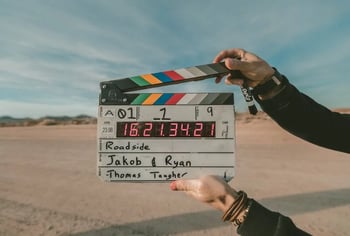Planning Your Video Production Shoot Schedule: Best Practices & Tips
Unlock the secrets of a successful video production shoot with our in-depth guide.
Crafting a stellar video doesn't happen by chance. It's a process that requires meticulous planning, attention to detail, and an understanding of your audience. Let’s delve into the world of video production and outline some best practices and tips that'll help make your next shoot seamless and successful.
1. Pre-Production Planning: The Blueprint
The bedrock of any successful video project lies in its pre-production phase. Establishing clear objectives is paramount. Ask yourself, "What am I hoping to achieve?" It could be driving sales, imparting knowledge, or even just entertaining. Once you’ve pinned down the purpose, dive into research and development.
Crafting an effective script is no small feat. Think of it as the screenplay of your project. Each line, every visual cue should serve a purpose. Furthermore, storyboarding allows you to visualise the sequence, ensuring the video flows logically. Casting, too, is crucial. The right actor can elevate a scene, while the wrong choice can just as quickly sink it. Spend ample time and resources on this pre-production phase, as it’ll set the tone for the entire project.
Tips:
-
Establish Your Objectives: Are you creating an advertisement, a documentary, or maybe a corporate training video? Your objectives dictate the tone, content, and duration of your video.
-
Research & Development: For story-based videos, spend time on scripting, storyboarding, and casting. Familiarise yourself with effective scripting techniques and develop a strong foundation for your video.
2. Budget & Resources: Keeping It Real
Let's face it, we'd all love an unlimited budget, but reality often dictates otherwise. Your financial constraints will determine many aspects of your production, from the locations you can afford to the equipment you can rent or buy. However, a limited video production budget doesn't mean compromising on quality. It's all about smart allocation.
Spend on what truly matters. Perhaps a high-end camera is more critical than a fancy location for your project. As for resources, be kind to your crew and equipment. Overworking either can result in diminishing returns. Manage expectations and always have a clear overview of where resources are allocated.
Tips:
-
Budget Allocation: Be clear about where your money's going. This means knowing the cost of locations, equipment, talent, and post-production.
-
Resource Management: Understand the limitations of your equipment and crew. Overburdening your team can be detrimental to the final product.
3. Location Scouting: Setting The Stage
The right location can instantly transport your audience, imbuing authenticity and depth to your story. But finding that perfect spot requires a combination of research and intuition. Look for places that align with your script and storyboard. However, logistics play a significant role.
A picturesque location on top of a mountain might look stunning, but think about the equipment transportation or the lighting during different times of the day. Always conduct recces – photographs and videos can be deceptive. Experiencing a location in person can offer insights no image can provide.
-
Location Research: Before choosing a location, understand its logistics, permissions required, and any potential noise or lighting issues.
-
Recces: Physically visit potential locations to gauge their viability. This guide on location scouting provides invaluable insights.
4. Team Management: Collaboration is Key
Creating a video is a group effort. From the visionary director to the diligent grip ensuring the lighting stands stay put, each role is crucial. Define responsibilities from day one. Avoid overlap that can result in wasted time and confusion.
Communication is another cornerstone. Promote an environment where the team can share their ideas, voice their concerns, and collaborate in real-time. It not only boosts morale but can lead to innovative solutions and ideas.
Tips:
-
Clear Roles: Assign roles clearly. Everyone should know their responsibilities, from the director to the grip.
-
Open Communication: Foster an environment where ideas can be shared and feedback can be given freely.
5. Scheduling: Timing is Everything
The adage "time is money" is particularly apt for video production. Drafting a shoot schedule requires foresight. Prioritise your scenes. Complex sequences or scenes demanding specific lighting should be tackled first. Unexpected delays are part and parcel of the process. Maybe it rains, or equipment malfunctions.
Building buffer time into your schedule can be the difference between a successful shoot and a logistical nightmare. And never forget the 'golden hours'. There's a reason filmmakers love the soft, warm hues of sunrise and sunset – it makes everything look magical.
Tips:
-
Prioritise: Identify which scenes are most complex and tackle them when the team is freshest.
-
Buffer Time: Always allocate extra time for unexpected delays. As the adage goes, "Hope for the best, prepare for the worst."
-
Golden Hours: For outdoor shoots, capitalise on the 'golden hours' during sunrise and sunset for the most flattering natural light.
6. Health, Safety & Permissions: Safety First
Never underestimate the importance of permissions and safety. Shooting without the right permissions can lead to legal issues, fines, or at the very least, wasted time. Research is crucial here. Every location, be it public or private, might have its own set of rules. As for safety, it's non-negotiable. From ensuring cables are taped down to prevent trips, to having first aid on hand, always be prepared. It not only protects your crew but also shows professionalism.
Tips:
-
Permissions: Ensure you have the requisite permissions for your shoot location. This might mean dealing with local authorities or private property owners.
-
Safety Protocols: Have a first aid kit on set, understand the potential hazards of your location, and have emergency numbers at hand.
7. Post-Production: Stitching it Together
Once the cameras stop rolling, the real magic begins. Editing is an art form. It’s where you sculpt the story, fine-tune performances, and set the video’s pace. Don’t rush this phase. Take regular breaks to ensure you're viewing your edits with fresh eyes.
Feedback is invaluable. Involve key stakeholders in reviews. They offer a fresh perspective, catching things you might have missed. Remember, post-production is as crucial as the shoot itself. Dedicate it the time and respect it deserves.
-
Editing: Dedicate ample time for this process. It's where your vision truly comes to life. Use tools that align with your objectives and desired output.
-
Feedback Loops: Involve stakeholders in the review process. This ensures the final video aligns with the vision and purpose.
To sum up...
A video shoot, when broken down, is a complex dance of planning, collaboration, creativity, and technical prowess. While it might seem daunting at first glance, a methodical approach ensures success. Our video production company isn’t just about equipment or locations; it's about creating compelling narratives, resonating with audiences, and making a mark.

Written by Emily Malone Marketing Manager for Venture — a full-service video production agency that specialises in producing creative videos & campaigns that get real results.
























